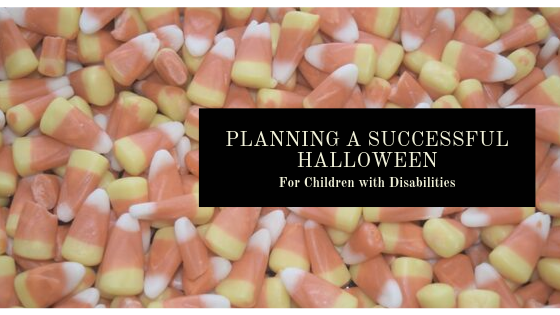Parents of children with disabilities and special needs are not unaccustomed to making accommodations to everyday events. Some adjustments may be easier than others, especially when parents want to ensure that their child still feels included and valued despite their differences.
Halloween is a beloved holiday by children throughout the United States, and making some small changes to the home and arrangements can ensure every eager trick-or-treater has a wonderful and safe night.
Make Candy Bowls Accessible
Children with limited mobility or who use a wheelchair miss out on trick-or-treating because they cannot climb stairs or reach porches. To counteract this, families can hand out candy from the sidewalk in front of their home or at the end of their driveway. Keeping all of the treats at street-level is the best way to ensure every child is included.
Avoid Flashing Lights and Pop-up Decorations
Children who are prone to seizures or have autism are particularly sensitive to sensory stimulation, so avoid any decorations that could trigger a seizure or induce panic. Scary, gory and otherwise mature themes should be reserved for indoors; trick-or-treaters can enjoy jack-o-lanterns, scarecrows, friendly ghosts, and other monsters with some spooky music for ambiance.
Have Non-Edible Options
Many children have dietary restrictions and fatal allergies that prevent them from enjoying Halloween candy. To accommodate these trick-or-treaters, offer out alternatives such as small Halloween plush toys, stickers and small toys. Parents will also appreciate the healthy alternative to the pail full of candy that their child already has from previous houses.
Do Not Deny Candy to Un-costumed Children
Some children cannot handle the extra-sensory stimulation of a costume. These children often face discrimination from neighbors who have a strict “no costume, no candy” rule. Although they may think they’re simply upholding the spirit of trick-or-treating, this type of rejection is extremely demoralizing and upsetting to children with autism and other disorders. All trick-or-treaters deserve a treat.
Keep Things Lighthearted
Halloween horrors and haunted houses are best left to adults. For children, the evening should be a fun way to express themselves and take in all the laughter and excitement buzzing through the neighborhood. Keep in mind that some children may not be able to articulate themselves or verbally ask for a treat, but they should not be left out of the fun.
When faced with a child who is not verbal, simply smile, wish them a happy Halloween and complement their costume if they have one. With this inclusive approach in mind, everyone can have a wonderful holiday.
